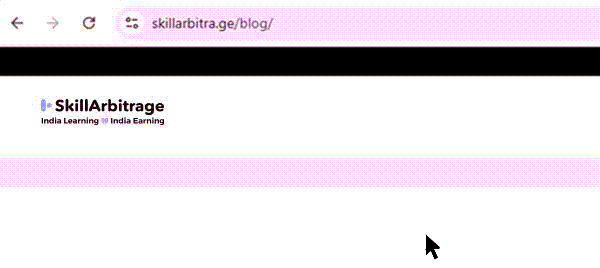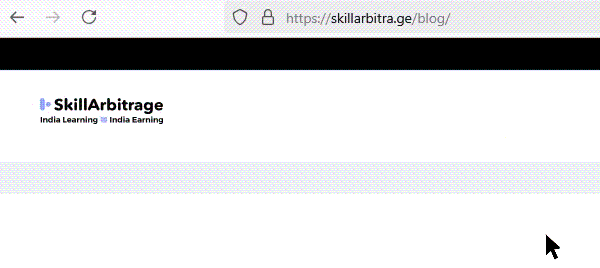This blog will help business owners learn how they can use customer feedback to create new sales opportunities, improve products/services, and increase revenue at the same time.
Table of Contents
Introduction
“Anything that you say can and will be used against you in the court of law.”
Almost everyone must have heard that quote, but do you know that you can use the same quote with a slight variation in the world of sales?
“Anything the customer says can and will be used during sales.”
In reality, that’s what the best salespeople do. They listen closely, understand exactly what the customer wants, and then use those same words to sell the product/service back to them.
We call it “turning customer feedback into sales opportunities.” Let me tell you a short story of my experience with it.
In my first business, I did everything right. I had a great product, strong marketing, and a steady flow of customers. But still, the conversion rate was not growing as fast as I expected.
If you’ve ever felt stuck in the same situation where sales aren’t growing despite doing everything right, this might be your missing piece, too.
I did not know what the missing piece was. I constantly tried improving my website and ads, as well as tried many different variations, but the growth always remained flat.
That was when I discovered the problem was not in my website or ads. The real problem was in how I reacted to the voice of my customers, that is, their feedback. We were only listening to customer feedback to improve the product, but never to sell.
I found that customer feedback can also be used to understand what customers actually want and what problems they face so that we can directly target them with that information to increase sales.
That is when I started correctly using customer feedback, and within just a month, I realised that it is the most powerful weapon for boosting sales, and I was just sitting on it for so long.
Now, I want to share how you can also use customer feedback to turn it into a sales opportunity, so that instead of guessing what customers want, you can use their own words to sell to them.
But before that, let me show you some reasons why most good businesses love to use customer feedback as a sales opportunity.
How is customer feedback linked to sales opportunities?
Some business owners think customer feedback is only meant to improve the product/service. But the smart ones who grow faster know that feedback is a sales tool.
They consider every feedback as a hidden clue that will tell them what to sell, how to sell, and what’s stopping people from buying. That’s why the businesses that treat feedback like a sales opportunity get exponential growth in sales, while the rest just stay stuck.
In fact, research shows that 75% of businesses directly link improved customer satisfaction was achieved by acting on feedback, which eventually increases revenue.
- Customer feedback directly tells you the customer’s pain points, desires, and objections, which are the most important aspects that a business needs to create offers that get sold.

- Instead of guessing what customers want, you can use their own words to shape sales opportunities and sell to them directly.
- When customers see that you acted on their feedback, it shows that you truly care about them and are providing them with a better product/service; hence, they become your loyal customers.

- Using customer feedback, you can turn a complaint into extra revenue by acting on it and offering a solution by pitching an upgraded version of the same product/service.
- You can create better ads by using the phrases that you get in customer feedback, as that is what most real buyers might want or think.
- You can be aware of new customer trends much earlier than your competitors, as you will be closely watching the shift in consumer trends through customer feedback.

- You can increase retention on subscription models as customers will see that you solve their problems faster, so they will prefer staying with you longer.
These are just a few of the reasons why it’s a great idea to use customer feedback as a sales opportunity. These reasons are enough for any business owner to start paying attention to their feedback.
If you are now interested in learning how to use customer feedback to improve your sales offers, let me show you the full blueprint that I have on it that’ll work with approximately any business worldwide.
A step-by-step method to turn customer feedback into sales opportunities
It’s very important to use customer feedback smartly while selling because that way, you can show customers exactly what they want to see. Consider it a goldmine that you have not yet discovered.
Let’s start with each step in detail so you can use customer feedback to sell better in any situation.
Step 1: Identify the feedback
Every business gets customer feedback from time to time. When a customer hates, he gives negative feedback, and when a customer loves, he gives positive feedback.
Both of these pieces of feedback will help create different sales opportunities, while some feedback might not even help.
This is why the first step is to identify the different kinds of feedback that you have and segregate them into different categories so that you can only focus on the feedback that will create opportunities for you.
- Collect & Filter
Start making a list of every source from which you get feedback and collect it. Make sure you collect from a diverse set of sources because a single source can give biased data. Here are a few sources you can look at:
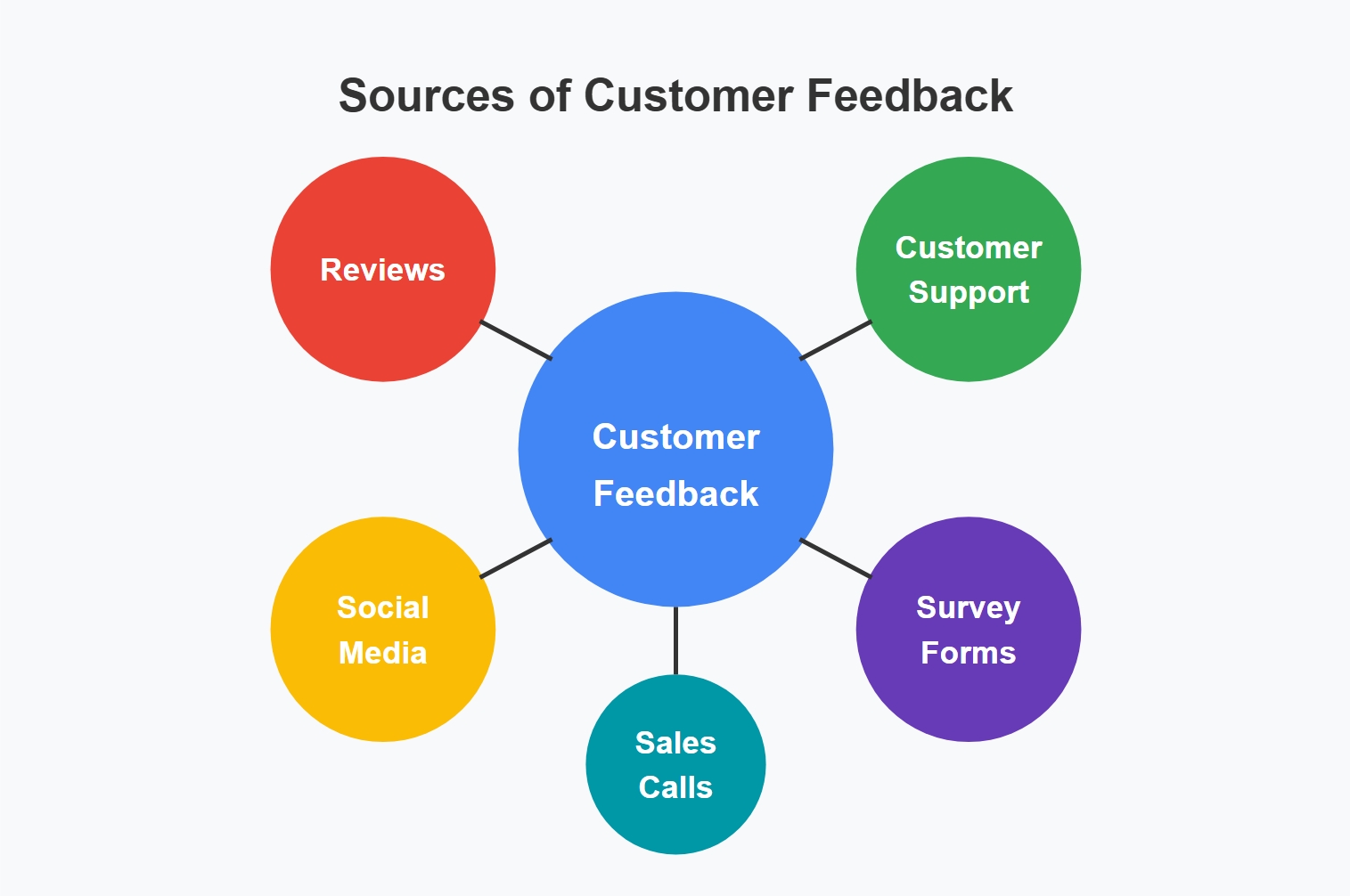
- Reviews: Check the reviews that your product/service has on your website or marketplace.
- Social media: Check DMs, comment sections, and mentions on every social media platform that your business is on.
- Customer support: Monitor the customer support interactions to extract insights that can act as customer feedback.
- Survey forms: If you don’t have any previous sources, try giving a survey or feedback form to your past customers.
- Sales calls: Record every sales call or chat and analyse them to find out what customers say before buying and before not buying.
Make sure when collecting or sharing customer feedback, always respect their privacy. It will be a good idea to anonymize personal information (like names or contact details), and comply with data privacy laws, such as GDPR or CCPA.
If needed, try asking for permission before using their real personal information. This way, you protect your customers and your business at the same time.
If you have a large customer base or want better categorisation, you can also consider using AI-based feedback tools like:
- Zendesk: Great for automatically sorting customer support conversations, finding common issues, and quickly showing you trends.
- SurveyMonkey: Great for easily collecting feedback from many customers through simple surveys. It also quickly shows you what customers struggle with and how they feel.
- Qualtrics: An all-in-one tool that helps you easily collect, organize, and understand customer feedback. Great for clearly seeing what your customers do, want, and need.
These tools will save you a lot of time and make sure your feedback is useful, clear, and helps you sell more.
Also, make sure you only collect feedback that actually matters and can be turned into something useful. If the feedback does not give any actionable insights, don’t collect it, as it’s of no use to the business.
For example: Don’t collect feedback like “Great service,” as it doesn’t tell you anything specific using which you can improve yourself.
However, feedback like “Stop making spam calls to me” must be collected, as you can fix the spam call issue to make sure customers don’t have a negative impression of your business.
- Categorise them
Once you identify and collect the customer feedback, you will realise they all are not the same. Some are positive, some are negative, some are just praise, etc. This is why we will have to deal with every type of customer feedback in a different manner.
So after collecting the feedback, go ahead and categorise them into the three categories below:
- Pain points: This category will have feedback that shows a customer being frustrated or angry for any reason whatsoever. For example: Customers complaining, “Shipping is very slow.”
- Objections: Add feedback where people are hesitating before purchasing the product/service or they are doubtful about some feature.
For example: A customer commenting, “I don’t think your product will actually solve the problem.”
- Praise: In this category, customers will be telling you how much they loved your product and what they specifically loved about it. For example: A review saying, “This was so easy to use.”
You need to continuously add feedback into these categories once every week if you get a lot of it and once every month if you are new and get very little feedback. The purpose is to maintain this list regularly to consistently upgrade our sales offers.
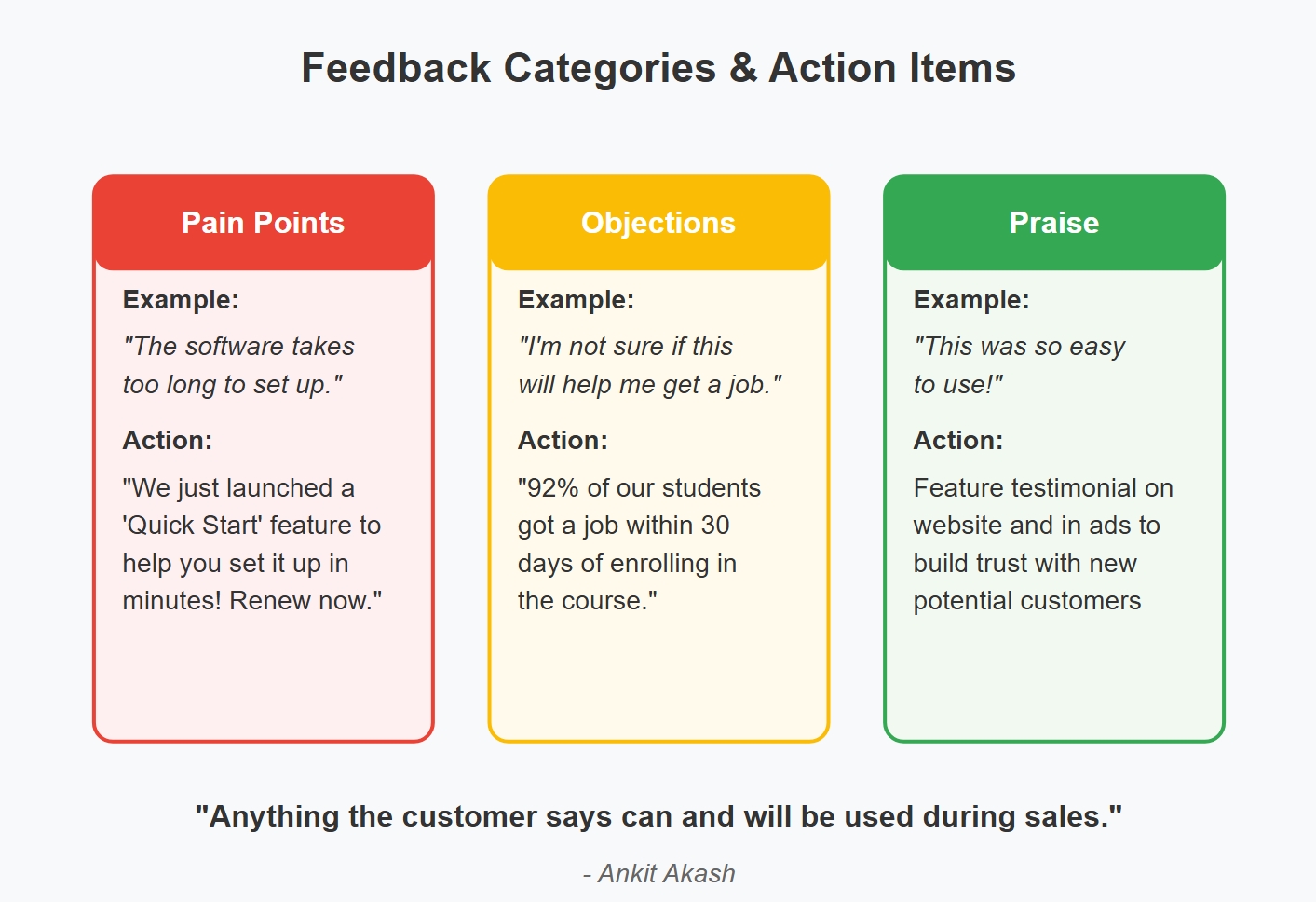
Now, after you divide the feedback into the above three categories, let me tell you what to do with all that categorised feedback one by one.
Step 2: Sell the solution to the pain point
You need to understand that they are not buying your product/service because it is a product/service, but instead, they are buying it because they believe it’ll solve a problem that they have.
Now, when you notice the feedback in the first category you created in Step 1, you will see it is full of frustration and anger towards your products and services. Don’t get hurt by it; instead, make a list of what those pain points actually convey, like
- Where did they face the problem?
- What was the problem?
- What did they suffer because of it?
Once done, you will have a list of problems that people face with not only your product/service but also your competitors. This could be a good opportunity not only to regain your lost customers but also to attract customers from your competitors.
So, what you have to do is find the solution to those problems and then use that solution in the sales pitches or ads to attract customers.
Let me explain with some examples:
- “I love your software, but it takes too long to set up.”
Suppose a customer says, “I love your software, but it takes too long to set up.” Now, after reading this feedback, most business owners will feel hurt. But you shouldn’t, because you are reading this blog.
What you will do instead is realise it’s a pain point, and if one customer is facing it, a lot more must be facing it, too. So you will contact all those customers who stopped using the software with an email saying,
“We just launched a ‘Quick Start’ feature to help you set it up in minutes! Renew now.”
And there you go. You used the solution to a customer’s pain point and brought in customers who had previously stopped using your product due to this problem. Let me show you some more examples so that this is clear to you.
- “The price is too high.”
Suppose a lot of your customer feedback is saying that the price is too high, which is why they are not buying your product/service. Most business owners will ignore this feedback, considering they are not their target customers. But you wouldn’t.
What you would do instead is offer the solution of the higher price pain point by mentioning, “We now have easy EMI options so you can get started today for just ₹499/month!” on the home page or payment page of your website.
- “I wish the software had X feature.”
Now, let’s assume customers said, “I wish the software had X feature.” Consider this feedback as an easy sales opportunity because the customer is directly telling you what they want and what they would happily pay you.
So what you could do is tell them something like, “Upgrade to our premium version and get exactly that!” so that you can switch them to a higher-priced plan and also solve their problem at the same time.
Here’s a template that works most of the time, and you can use to address a pain point via email/message:
Subject: We heard you loud and clear [Problem solved!]
Body: Hi [Customer Name],
We noticed you faced [mention specific pain point]. We took your feedback seriously and launched [mention your new solution/feature]. Now you can [mention how your solution solves the pain point].
[Call to Action Button]: Try the improved [product/service] now
You can use testimonials and case studies to show new customers during the sale that your business actually solves the pain point that they’re facing. The main game here is to listen, adapt, and use their pain points as a direct selling opportunity.
That’s exactly how good businesses turn a customer’s pain point into a successful sales opportunity. Now, let’s head to the second category of feedback, which is “Objections.”
Step 3: Attack the objections directly
These are the feedback where people are giving objections or excuses during the selling process.
And it’s completely normal, as it happens with every business out there. Before purchasing, people always raise objections like, “Is it worth the price?” or “Is the quality good?”
These objections are easy to counter and can be used as an opportunity to sell, but most businesses fail to do it.
That’s because they fail to understand that instead of running away from it, they should face it upfront, as it’ll remove doubt, build trust, and make customers buy.
According to Highspot, 64% of customers are more likely to buy from businesses that confidently address their objections upfront.

What you have to do is attack their objection even before they raise the objection. After reading the feedback, you already know what the objections are that most customers face.
Now you just need to solve that objection on your sales page itself or during the sales call before the customer raises it. Let me explain to you with a few examples:
- “I am not sure if this will help me get a job.”
Suppose you sell an online course on getting a job. You know that during sales, most customers raise an objection saying, “I am not sure if this will help me get a job.”
Remember what I told you about how to solve it? You need to attack the objection before customers even raise it.
So simply mention this on your website, and the customers will themselves not get that objection in mind – “92% of our students got a job within 30 days of enrolling in the course.”
Or, if you are on a sales call, you can mention it at the same time you are explaining about the course to the customer.
And there you go, now the customer, instead of doubting, will have more trust and confidence in your product, and hence be more inclined to purchase.
- “I’m not sure about the quality of the course.”
Now, suppose you also get objections saying, “I’m not sure about the quality of the course.” Think about why someone would have that objection. You will realise it’s because they are hesitant to pay for a course that might not be worth it. Right?
So what you could do is tell them something like, “Upgrade to our premium version and get exactly that!” so that you can switch them to a higher-priced plan and also solve their problem at the same time.
Here’s a template you can use to easily handle common objections on a sales page or call:
Common objection: “[Insert customer objection, e.g., Is it worth the price?]”
Response: “[Address the objection directly by using stats/testimonials/guarantees]. For example: 90% of our students got their first job in just 30 days. And if you don’t get similar results, we offer a full refund within 7 days – no questions asked.”
You can use testimonials and case studies to show new customers during the sale that your business actually solves the pain point that they’re facing. The main game here is to listen, adapt, and use their pain points as a direct selling opportunity.
That’s exactly how good businesses turn a customer’s pain point into a successful sales opportunity. Now, let’s head to the second category of feedback, which is “Objections.”
Step 4: Flex praises to every potential customer
This is the third and last category of your customer feedback that you categorised in Step 1. These are feedbacks where people are praising how your product/service helped them.
Most business owners pay attention to negative feedback, but with positive feedback, they do nothing except feel happy about it. That’s a mistake.
Don’t just thank them for their positive feedback when you can use it to create powerful sales opportunities. How? See, people trust other people more than ads or anything else that you can do.
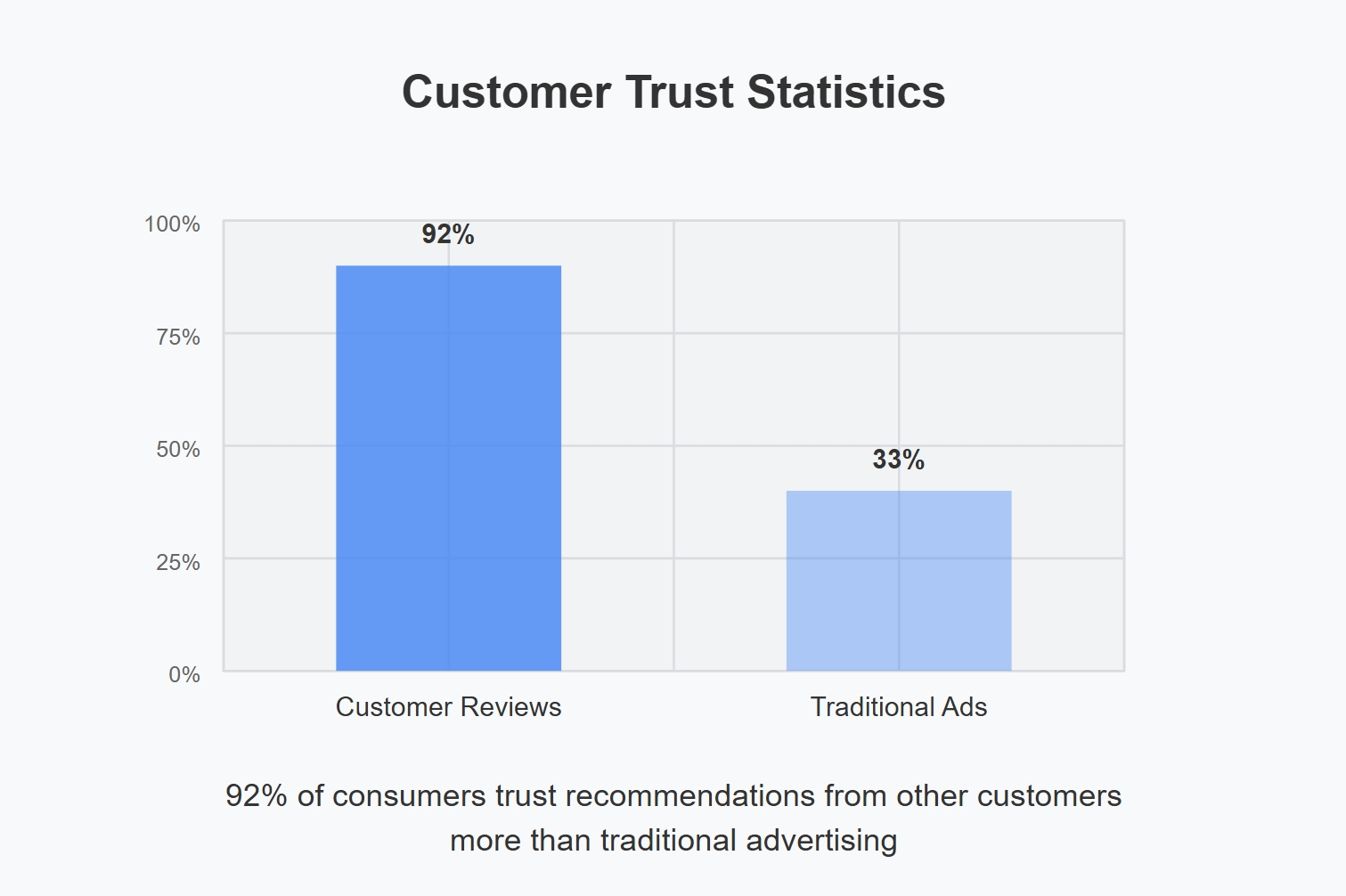
In fact, Nielsen research found that 92% of consumers trust recommendations from other customers more than traditional advertising.

This is why customer reviews are shown on every marketplace, whether Amazon or Flipkart. You need to use that information to your advantage. If people trust other people more, then why shouldn’t you flex the positive feedback in front of them? Good idea, right?
That’s how we are going to use the praise and positive feedback that we have. We have to make sure every buyer sees that our other customers are enjoying their purchase.
This will not only build trust and credibility but will also evoke FOMO (Fear Of Missing Out), which will push potential customers to buy quicker. Here are some ways you can do that:
- Feature testimonials on the website so that anyone who visits the website immediately believes that it has worked for others, so it can work for them too.
For example:
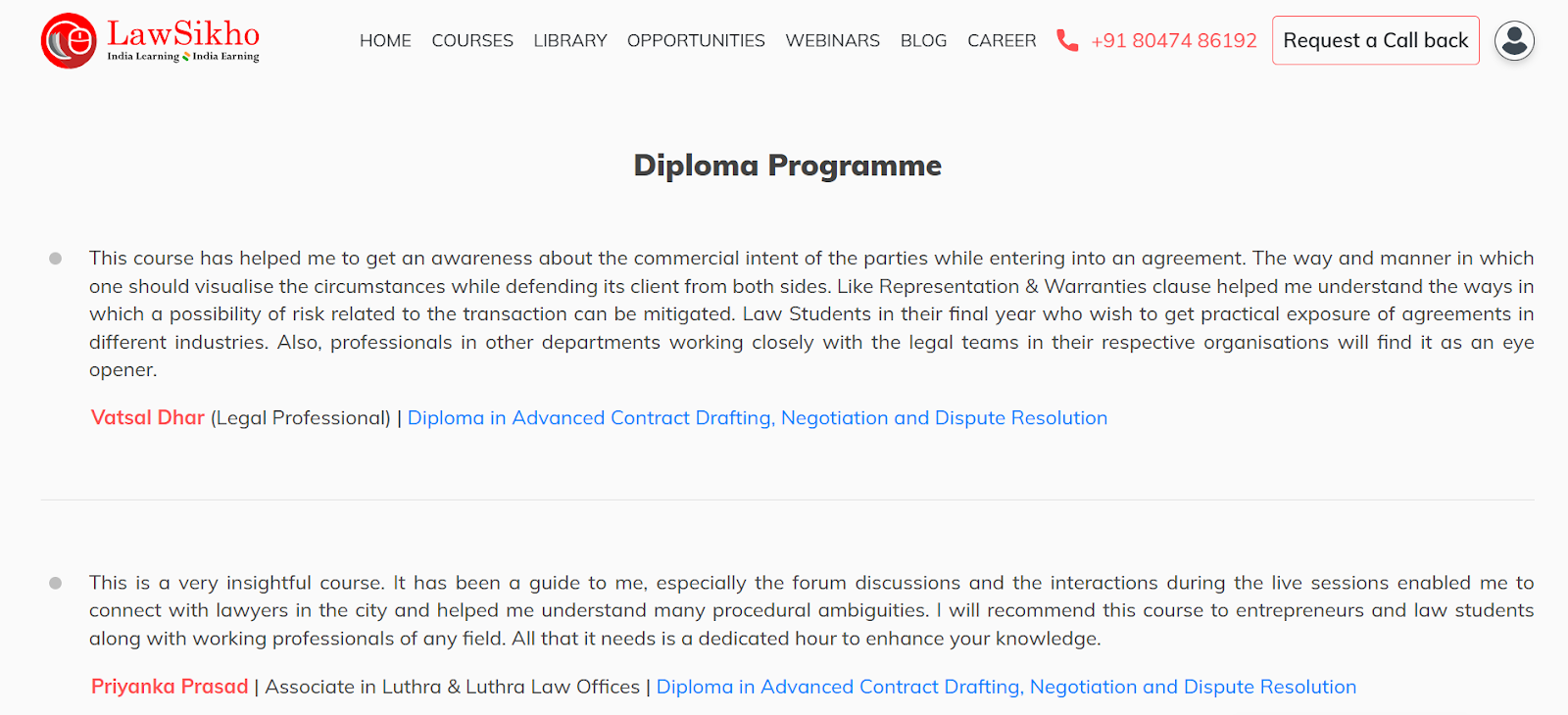
- Use the customer’s words in your advertisements so that you can build credibility from the first impression itself.
For example:
- Include reviews near your CTA so that people get one last trust-building before they press the “Buy” button. This will make sure they don’t even get any objection even at the final step, hence purchase the product/service.
For example:
You can use these ways to take advantage of the positive feedback you get. There’s no need to let them go to waste by just thanking them. It’s better to showcase it to potential customers so that they know what you sell ACTUALLY WORKS.
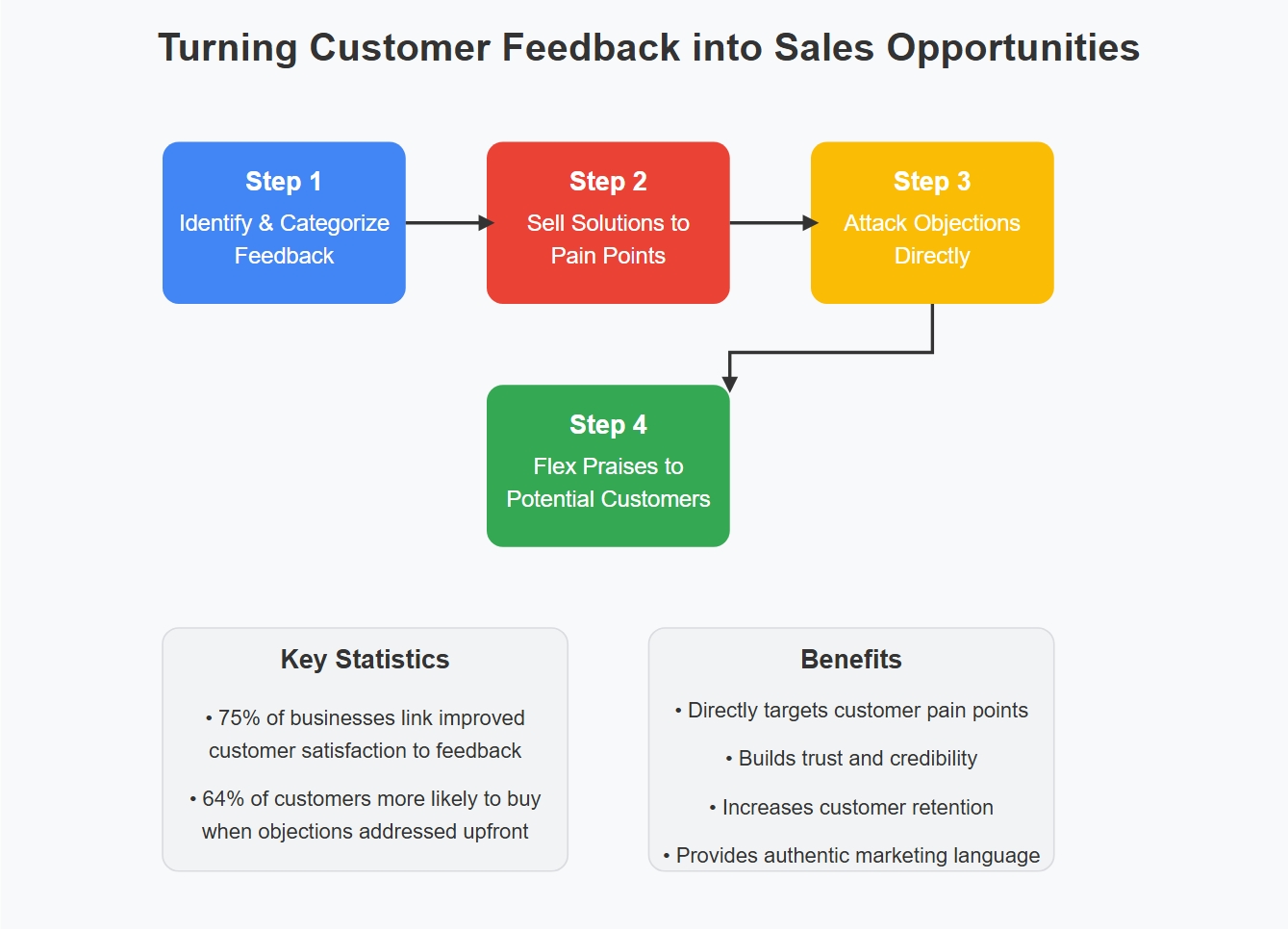
Advanced strategies if you want to level up your customer feedback game
If you’ve already got the basics of using customer feedback to sell, let’s explore some advanced ways to get even more from it. Here are four powerful strategies that smart businesses use:
- Use AI to quickly understand customer emotions
If your business gets thousands of reviews or feedback messages every month, it becomes impossible to read and make sense of each one manually.
You’ll never clearly understand what customers truly feel or need if you try to read them one by one. You should instead use AI-powered tools like IBM Watson.
These tools automatically read all your reviews and clearly categorise them based on customer emotions like happiness, anger, confusion, or frustration. Let me clearly show you an example:
Suppose AI analysis quickly shows you that a huge number of customers feel frustrated during your checkout process because it’s slow or complicated.
Now you don’t have to guess or manually read reviews as you clearly see the issue and can quickly fix it.
- Predict Customer Behaviour
What if I told you that you could solve your customers’ problems even before they occur? That’s exactly what predictive analytics will do. It uses your past customer feedback and data to clearly predict how customers will behave next.
You can implement a predictive analytics tool (like Google Analytics, Mixpanel, or even advanced CRM tools). These tools identify patterns clearly, like common reasons why customers stop buying from you (also known as churn).
Let me clearly show you an example: Let’s say your data clearly indicates that customers who face long delivery times typically stop buying.
You can immediately solve this by proactively offering faster shipping, special discounts, or loyalty perks before they even think of leaving.
This clearly shows customers you genuinely care about their experience, and it prevents you from losing valuable customers.
But what if you get negative feedback on a public platform? That could harm your image a lot and hurt sales. It’s very important to handle negative feedback from customers in public in a way so that it doesn’t even hurt your brand.
How to handle negative feedback in public (without hurting your brand)?
When you run a business, negative feedback in public places like social media or online reviews is inevitable. Most business owners panic, avoid responding, or worse, get defensive.
But the smart ones use it as an opportunity to strengthen their brand image. Here’s how you can handle negative feedback publicly without harming your reputation:
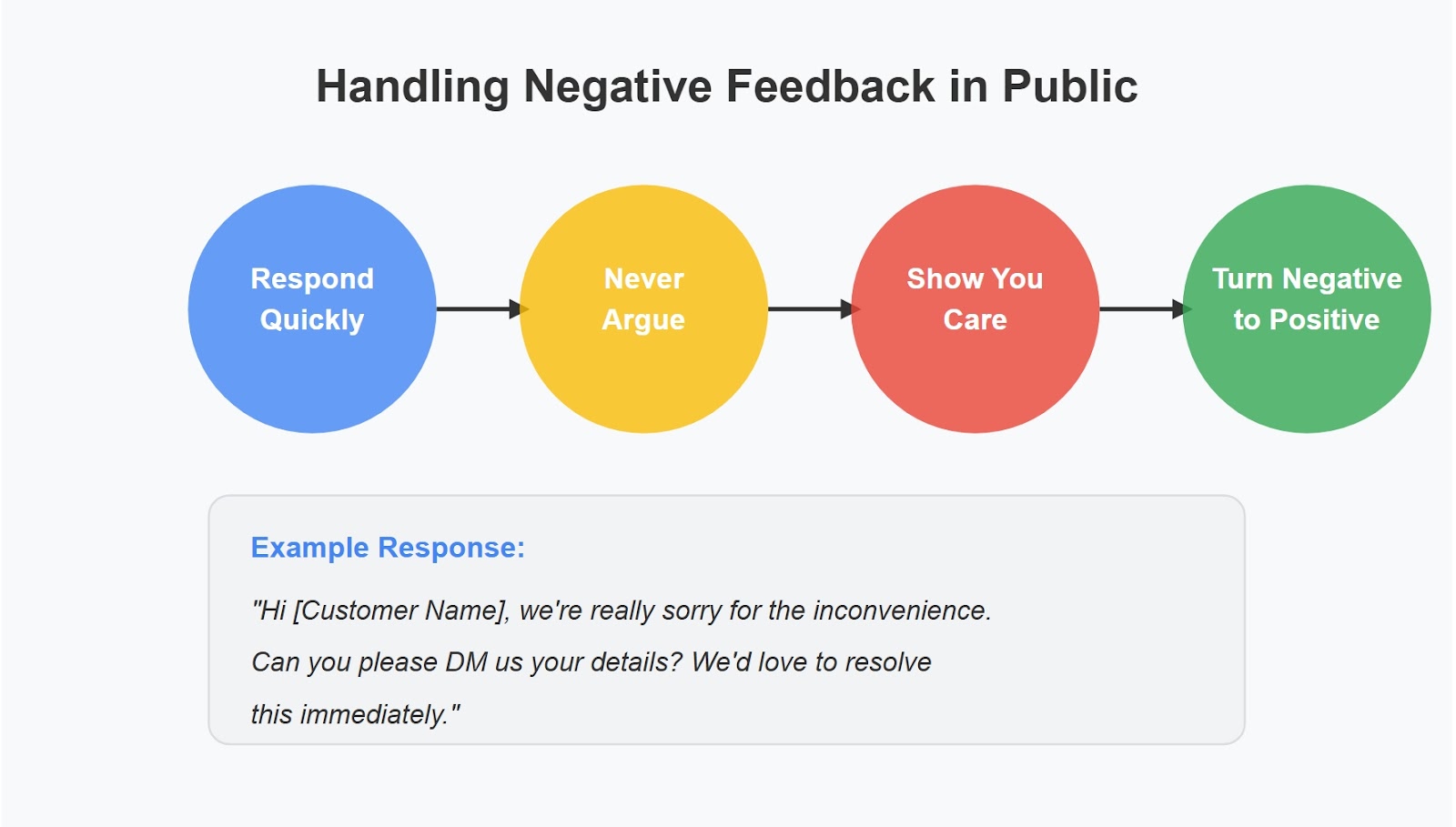
- Respond quickly (but calmly): Don’t let negative comments sit unanswered. Reply quickly but always stay polite and respectful.
Template example: “Hi [Customer Name], we’re really sorry for the inconvenience. Can you please DM us your details? We’d love to resolve this immediately.” - Never argue: Even if the customer is wrong, arguing publicly makes you look unprofessional. Move the conversation privately, if needed.
Template example: “We completely understand your frustration and want to help. Please send us a private message, and we’ll look into this right away.” - Publicly show you care: Always highlight that you care about customer satisfaction. Other potential buyers will notice and appreciate your efforts.
Template example: “Your experience matters greatly to us, and we’re committed to fixing this issue ASAP.”
- Turn negative into positive: When possible, highlight improvements you’ve made because of customer feedback publicly.
Template example: “Thanks for your feedback! Because of your suggestion, we’ve now improved our shipping speed significantly.”
By handling negative feedback clearly, politely, and transparently, you’ll turn unhappy customers into brand advocates as well as impress future customers who see your responses.
Conclusion
Most business owners don’t pay much attention to customer feedback. Those who pay only use it to fix problems with their product/service. That is exactly where they go wrong. The best businesses don’t just listen to customer feedback, but they use it to sell more.
Every complaint, objection, and praise comes with a hidden sales opportunity inside of it waiting to be used.
Are your customers pointing out problems? Sell them the solution.
Are they having objections? Address them before they even ask.
Are they loving your product? Make sure every potential customer sees it.
From now on, no need to guess how you’ll sell to your audience because they are already telling you that. Do you remember what I mentioned at the beginning of this blog?
“Anything the customer says can and must be used during sales.”
Frequently asked questions
How do I encourage customers to share feedback if they’re not saying much?
You can encourage customers to share feedback by offering a small incentive, like discounts or freebies, for filling out a survey. Also, it’ll be much better if you personally call or email them, as it will show genuine interest, so a lot of customers will actually give their feedback.
Should I reply to every piece of negative feedback?
Yes, absolutely. You should reply to negative feedback but only if they are relevant and actionable. Make sure you are polite and respectful, as it will show that you care. And don’t worry if you cannot fix every issue, as customers appreciate just being heard, so they’ll still have the potential to become future customers.
Should I share upcoming fixes or improvements with those who gave me the feedback?
Yes, you should definitely let them know that you heard their suggestions and have started acting on them. This shows that you value their input, and most of the time, it will turn them into loyal customers and brand advocates.
How do I measure the sales impact of feedback-based changes?
You can keep track of KPIs such as conversion rate before and after the changes to understand how much of an impact the new changes brought.
What if customers demand a refund or compensation in their feedback?
You can provide a full or partial refund, whatever seems valid as per your policies. If the request is not valid, you can deny the refund, but make sure that you deny it in a polite and respectful way.

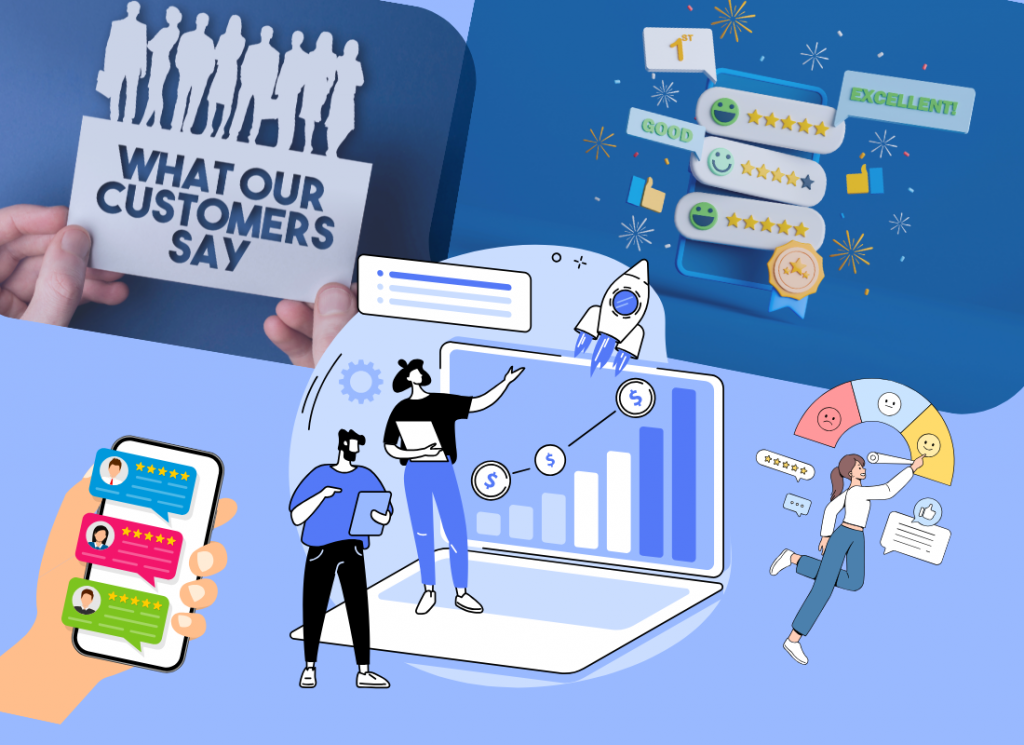





 Allow notifications
Allow notifications